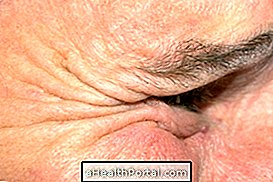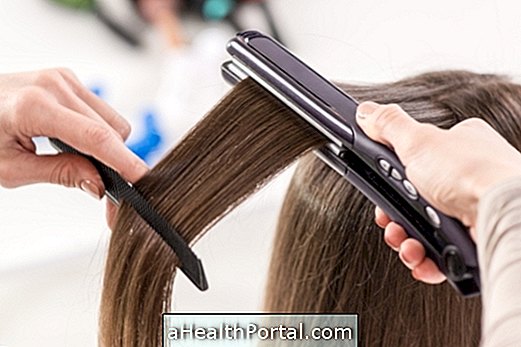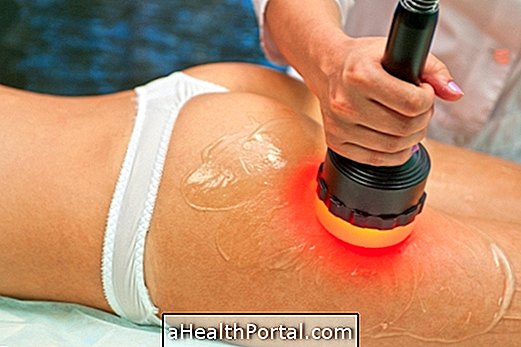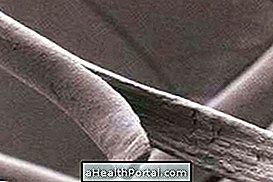Phenol peeling is an aesthetic treatment that is done with the application of a specific type of acid on the skin, to remove damaged layers and promote the growth of a smooth layer, and is recommended for cases of severely sun damaged skin, wrinkles deeper scars, spots, or precancerous growths. Because they have dramatic results, only one treatment is necessary, and the results last for years.
In comparison to other chemical peels, the phenol peel is deeper and more aggressive, in which the skin layers of the epidermis and portions of the middle and lower layers of the dermis are removed.


How much does phenol peeling cost?
Phenol peeling may cost around $ 12, 000, however, other fees associated with the procedure may be charged, such as anesthesia, use of the operating room, and possible hospitalization.
How is the treatment done?
Phenol peeling is performed under carefully monitored conditions in a physician's office. The patient undergoes sedation and local anesthesia to relieve discomfort, and heart rate is also monitored.
The doctor uses a cotton tip applicator to apply the phenol to the skin, which will start to turn white or gray. To limit exposure to phenol, your doctor can do the phenol at intervals of about 15 minutes, and a full face procedure can take about 90 minutes.
How to prepare
As it is a very invasive procedure, before opting for phenol peeling, the doctor should be informed about heart, kidney or liver conditions, or any cosmetic procedures that have been used in the past, make a previous preparation:
- Take antiviral drugs before and after the procedure if you have a history of herpes infections in the mouth to prevent a viral infection;
- Use a bleaching agent, such as hydroquinone and a retinoid cream such as tretinoin, before or after the procedure to prevent darkening of the skin;
- Avoid unprotected sun exposure, using sunscreen at least four weeks prior to peeling, to help prevent irregular pigmentation in treated areas;
- Avoid certain cosmetic treatments and certain types of hair removal;
- Avoid whitening, massage or facial swab in the previous week.
If you are taking any medicine, or if you have taken any medicine recently, especially those that make your skin more sensitive to the sun, you should also tell the doctor.

Before and after the phenol peel
After peeling with phenol, a great improvement in the appearance of the treated areas can be verified, revealing a new layer of smooth skin, providing a dramatic rejuvenation. After healing is complete, the skin becomes lighter and brighter, more elastic and the appearance of deep wrinkles and severe discoloration is significantly reduced.
Although the results can last for decades, making the person look younger, they may not be permanent. As you get older, wrinkles will continue to form. New sun damage can also reverse your results and cause changes in skin color.
How is recovery
Being a very deep treatment, which results in redness with severe swelling and burning sensation, the phenol peel requires a long and uncomfortable recovery compared to the lighter ones, being necessary to make a recovery at home for at least a week .
Many side effects can be minimized if your doctor's instructions are followed, such as sleeping in a position that helps reduce swelling, taking painkillers, and applying a waterproof dressing. You should also avoid sun exposure for about three months after peeling because the skin is unable to tan, and you should always wear sunscreen before leaving the house.
The new skin appears about two weeks after the peeling, however, cysts or white patches may appear, and the redness may last for months. These signs can be masked with cosmetics after the new skin is formed.

Who should not do
A phenol peel should not be done by people with:
- Dark skin;
- Pale face with freckles;
- Keloid scars;
- Abnormal pigmentation of the skin
- Facial warts
- Personal history of frequent or severe outbreaks of wounds;
- Heart problems;
In addition, people who have made treatments for acne, such as isotretinoin, in the last 6 months should also not opt for this type of peeling.
This procedure can cause scars and changes in skin color, being the most common darkening of skin in this type of peeling, virus infection that causes wounds, or even heart, kidney or liver disease. Therefore, to limit exposure to phenol, the peeling is done in portions at intervals of 10 to 20 minutes.





















